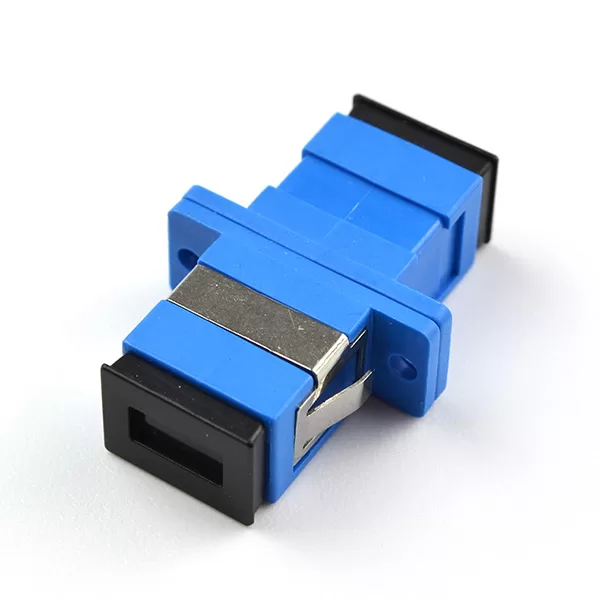Product Highlights
- Low Insertion Loss, typically ≤0.2dB, significantly improves signal quality and reliability.
- Small-form factor makes it ideal for high-density applications where space is a premium.
- Cost-effective solution provides high-performance connectivity at a relatively low cost.
- Color-coded for rapid fiber management
- Protective dust cap keeps adapter’s interior clean from dust
- Plastic buckle for toolless snap-in installation
- Available in a variety of connector types
LC/UPC Single Mode Simplex Fiber Optic Adapter/Coupler Specification
| Adapter type | LC/UPC Single Mode Simplex |
| Perda de inserção | ≤0,2dB |
| Perda de retorno | ≥ 50dB |
| Mating cycles | >1000 times |
| Temperatura de operação | -40°C a +85°C |
| Sleeve | Cerâmica |
| Comprimento de onda | 1310nm/ 1550nm |
| Conformidade | RoHS, ISO9001 |
FAQs on LC/UPC Single Mode Simplex Fiber Optic Adapter/Coupler

LC/UPC stands for Local Connector/Ultra Physical Contact, and LC/APC is the acronym for Local Connector/Angled Physical Contact. The “UPC/APC” refers to two different polish types of the connectors’ end faces.
LC/UPC connectors have an ultra-polished flat endface, resulting in low insertion loss and high return loss.
LC/APC connectors have an angled-at-8-degrees endface, reducing the amount of back reflection and improving signal quality.
LC/APC connectors are typically used in applications requiring high performance and stability levels, such as in data centers, high-speed telecommunications networks, and other demanding environments. They are often preferred over LC/UPC connectors due to their improved return loss performance and ability to reduce the impact of connector-related signal degradation.
In comparison, LC/UPC connectors are typically used in less demanding applications or where cost is a primary consideration. They are still a reliable and cost-effective solution for connecting fiber optic cables, but their lower return loss performance may only be suitable for some applications.
LC/UPC and LC/APC connectors have unique benefits and are used in different applications based on the network’s specific requirements. Ultimately, the choice between LC/UPC and LC/APC will depend on the desired performance and budget of the network.







